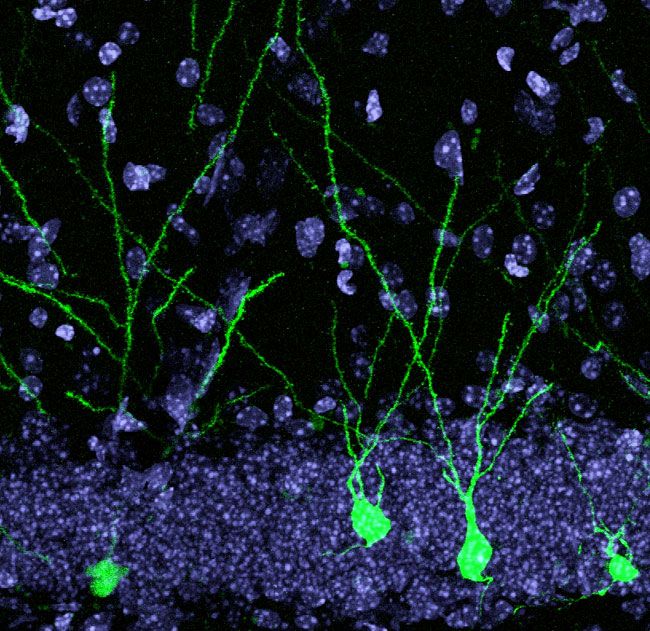Adults Brains Still Make Youthful Cells

The brains of adult mammals are slowly, constantly churning out new brain cells. Previously scientists assumed the fresh neurons acted simply as replacements for old and dying cells. But recent research suggests that these new adult neurons may help old cells adapt to new experiences and could someday be used to rejuvenate aging brains. The study, detailed in the May 24 issue of the journal Neuron, shows new brain cells act just as youthful in adult mammals as those generated in young ones. Hongjun Song at Johns Hopkins University School of Medicine and colleagues tagged cells in the brains of mice so that brand new nerve cells glowed green and were easy to track. At 1 to 2 months old, the cells showed the ability to alter chemical inputs from nerves nearby, an indicator of youthfulness in cells that is often referred to as plasticity. Not only were the novel cells acting young and agile, they were able to reinvigorate their elderly neighbors too. Teaching Old Mammals New Tricks It's no secret that young children learn most anything, including language, more quickly than adults. This is in part due to the plasticity of their brain circuitry. "The brief heightened activity we saw [in the mouse cells] may help explain how adults continue to adapt to new experiences even though adult brains are more hardwired than children's brains," said Song, a neurobiologist and stem cell scientist. Young neurons are generated in two areas of the brain: the hippocampus and the olfactory bulb. The hippocampus, in particular, appears almost like a fountain of youth. The new cells produced in the area, said Song, make the whole system younger. In previous studies, new brain cells have also been shown to play a role in memory and mood regulation. Song's research could prove helpful in regenerating brain circuitry after injury, such as spinal cord injury, or diseases like Parkinson's. "The early thinking was to use stem cells to replace damaged circuitry, but that sounded very difficult to achieve and was a very daunting task," Song told LiveScience. "Now, this looks more possible. We don't need to replace the circuitry completely. An injection of a new force of neurons can make the old ones more flexible."
- Top 10 Mysteries of the Mind
- Top 10 Mysterious Diseases
- Body Quiz: The Parts List
Sign up for the Live Science daily newsletter now
Get the world’s most fascinating discoveries delivered straight to your inbox.












